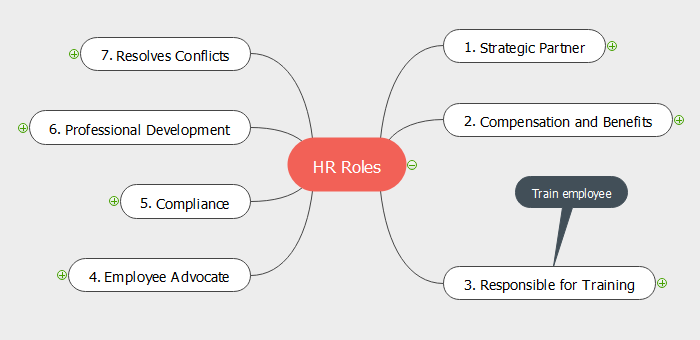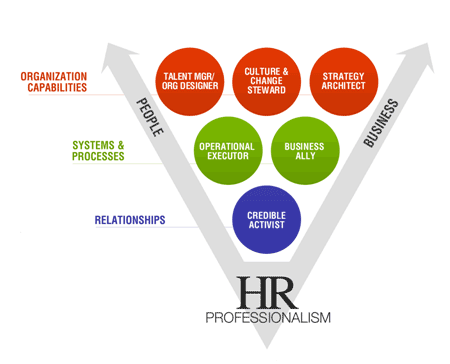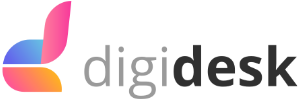Ultimately, HR transformation depends on the quality of HR professionals. Given the challenges of understanding the full business context, defining important business-related outcomes, and redesigning the HR department and state-of-the-art HR practices (all in our previous chapters), the bar has been raised for HR professionals.
The competencies that were all HR professionals once needed are no longer sufficient in the new world of HR challenges. In this chapter, the four-step model for building competencies has introduced.
Table of Contents
- Theory and Standards
1.1. HR Roles
1.2. HR Actions
1.3. HR’s Professional Competencies - Assessment
- Investment
3.1. Job Experience
3.2. Training Experience
3.3. Life Experience - Measurement and Follow-up
- Conclusion
1. Theory and Standards
Defining what it means to be a successful HR professional has been one of the primary pursuits for more than twenty years. The roles and activities combine to form the competencies for HR professionals. Companies focus their HR professional development on HR competencies, which is to integrate the roles and activities.
However, in some companies, they prefer to define effective HR by roles or activities. If a company wants to increase the reputation of its HR professionals, roles might be a good starting point. If a company wants to improve the day-to-day work of HR, activities might be a good starting point.
The focus is on defining effective HR through HR competencies that have been studied and assessed. Let’s look at each of these in detail.
1.1. HR Roles

A role represents an identity or image of an individual as seen by that individual and by others. The book HR Champions has defined four roles, each tied to an outcome of what HR professionals should deliver. These are:
- The employee champion focuses attention on helping employees develop competence, generate commitment and discover contribution.
- The administrative expert delivers HR practices with efficiency.
- The change agent helps the organization adapt to new conditions.
- The strategic partner aligns HR practices with business strategies.
All four roles must be played in an HR organization for HR professionals to be effective, yet an individual HR contributor may be a master of one role while being only sympathetic to and supportive of the other three.
Some HR leaders may be moving HR toward the strategic and change roles and ignoring the employee champion and administrative expert roles, which threaten HR credibility. HR professionals bring business, change, consulting, and learning know-how to their partnership with line managers so that together they create value.
1.2. HR Actions
Day-to-day HR work focuses on what HR professionals might do to fill the multiple events on their calendars. HR professionals perform four activities: coaching, architecting, designing and delivering, and facilitating.

- Coaching – HR professionals (and outside consultants) coach individual business leaders to reflect on and improve their performance. There are two distinct but connected models of coaching: behavior and results. Behavior-based coaching focuses on what leaders do and how they do it. Results-based coaching focuses on helping leaders clarify the results they hope to deliver.
- Architecting – As organizational architects, HR professionals turn general and generic ideas into tangible and durable blueprints for organizational action.
They continually look for the strategic agenda of the firm and try to envision its implications for an organizational agenda. In daily work, HR professionals often deal with immediate challenges and crises, but they should always be aware of the broader organizational architecture they are building. - Designing and Delivering – HR professionals design and deliver HR practices. To design and deliver HR practices, HR professionals need to be current in theory, research, and practices. They need to be able to adapt general principles to specific circumstances.
- Facilitating – As facilitators, HR professionals are attuned to the processes of macro and micro change. At the micro-level, they facilitate team meetings and planning sessions. At the macro level, they facilitate large-scale system change.
In daily interactions, HR professionals should have an agenda for how the culmination of diverse activities keeps the organization moving toward a longer-term success.
1.3. HR’s Professional Competencies
HR professional requires managing both people (being attuned to the human dimensions of a company) and business (mastering the requirements of the business). Within these two dimensions, it has identified six competency domains that lead to effective HR professionalism. These are mentioned below

- Credible Activist- The most effective HR professionals are both credible and active. impact. Activists who are not credible have ideas that no one implements. Credibility moves you up the people axis, and activism moves you up the business axis. Both are required for transformational HR.
- Culture and Change Steward – The most effective HR professionals appreciate, articulate, and help shape a company’s culture. Culture is a pattern of activities rather than any single event. As stewards of culture, HR professionals respect the past culture and also help to shape a new culture.
- Talent Manager and Organization Designer – The most effective HR professionals master theory, research, and practice in both talent management and organizational design. Talent management focuses on competency requirements and how individuals enter and move up, across, or out of the organization.
The organizational design focuses on how a company embeds capability into the structure, processes, and policies that shape the way it works. - Strategy Architect – HR professionals play an active part in the establishment of the overall strategy to deliver on this vision by being an active participant in creating a strategy. They also turn strategy into HR practices that culminate in organizational capabilities.
- Operational Executor – The most effective HR professionals execute the operational aspects of managing people and organization. HR professionals ensure that the basic needs are efficiently dealt with through technology, shared services, or outsourcing.
This operational work of HR ensures credibility if executed flawlessly and grounded in the consistent application of policies. - Business Ally – Businesses succeed by setting goals and objectives that respond to external opportunities and threats and executing plans of action that achieve those ends.
HR professionals should contribute to the success of a business by knowing the social context or setting in which their business operates.
2. Assessment

Once standards have been set, HR professionals need to know how well they meet those standards. There are informal and formal ways of assessing performance against standards. Informally, good HR professionals constantly seek feedback.
Honestly looking in a mirror and seeing what is really there helps HR professionals know their strengths and weaknesses. HR professionals can also seek formal feedback on how they are doing.
Note: Some of this assessment may come from personality and other self-awareness tests.
One key for using these personal assessments effectively is to not over- or underreact. Overreaction would be to immediately change behaviors and actions without considering how well the findings apply to the immediate situation. Underreaction would be to discount the information with equal lack of thought.
Thus, it is important to receive feedback from a variety of different sources, in what is often called 360-degree feedback processes. Most HR professionals have done a 360-degree review where they receive feedback from diverse stakeholders: peers, subordinates, supervisors, and clients. It is also useful in looking at 360-degree data to evaluate the predispositions of the overall HR community. Sometimes, HR departments have patterns that show up in regular 360-degree reviews.
In any of these assessment efforts, it is important that the recipients of the information sought to remain nondefensive, open, and willing to change. If others give feedback that is never acted upon, they will eventually quit giving feedback. It is also important to see patterns of perception. The recipients ultimately control the data and determine their own improvement agenda.
3. Investment
After a gap has been identified — both for each individual and for the department as a whole — the next step is an investment. Investing in HR professionals means allocating time and resources to upgrading their skills.
In learning research, it was reported at the 21st Annual Society of Industrial and Organizational Psychology (SIOP) conference in 2006, where scholars have found that about 50% of what we are able to do comes from nature and the other 50% from nurture.
Nurture refers to developing HR professionals with the required knowledge, skills, and abilities. Therefore, removing poorly performing HR professionals becomes a critical strategy to upgrade the company’s HR community.
In addition, investing in HR means nurturing HR professionals to higher levels of professionalism and performance by providing development experiences. The three approaches to developing HR professionals: job experience, training experience, and life experience.
3.1. Job Experience

The most powerful way to learn is by experience. Moving someone into a new job can provide a powerful learning opportunity; moving from a center of expertise to a business unit job or being assigned to work on an innovative business project is bound to stretch existing skills. The HR leader assigned some high-potential HR professionals to a special task force to build a merger or acquisition checklist.
Here are some additional work experiences that help HR professionals broaden and deepen their experiences:
- Make a line-to-staff move or vice versa.
- Coach or mentor someone else.
- Be assigned to profit-and-loss accountability early in a career and then move to successively larger assignments.
- Choose to take international assignments with different cultural experiences.
- Work in a turnaround situation.
- Be charged with a significant portion of a merger or acquisition deal.
- Participate in a customer internship.
- Attend an investor conference and share company information with investors.
- Participate in project teams that are add-ons to the present work assignment.
3.2. Training Experience

All too often, HR professionals and department are so caught up in delivering training that they are the last to receive formal training in how to upgrade their roles. Effective training can be a powerful source of development for HR professionals striving to become more strategic. results.
In one company, Ryan Quinn and Wayne Brockbank report, the perception of HR’s impact on business results increased by 120% as a result of the HR training intervention. The learnings are customized to the company’s specific business situation and implementation challenges can be thoroughly addressed and overcome.
3.3. Life Experience
Learning also stems from personal choices. This might include building a personalized reading program where HR professionals regularly read, report, and apply key concepts from leading thinkers.
Learning by observing goes on constantly for those who are inquisitive and seek new ideas.
Michael Lombardo and Robert Eichinger
HR professionals can develop by experimenting with new behaviors. Keeping a learning journal helps you see how you are progressing and what you are learning. Be in a constant inquisitive mode to see what could be done better. Learning-by-doing-and-reflecting has long been recognized as a powerful way to enhance personal skill development.
4. Measurement and Follow-up

The final step in any talent improvement model is measuring and following up. Measurement means tracking the quality of the HR professionals and of the investments to develop the HR professionals. Having a baseline of HR performance and then regularly benchmarking against that baseline allows HR leaders to present progress to their business leaders.
Measurement and follow-up mean that HR transformation should not just be about the development of HR professionals. It also requires that HR development should be part of HR performance management, that the goals and processes of the HR transformation are clearly and comprehensively communicated, and that HR work is optimally organized to deliver value.
5. Conclusion
This chapter talks about transforming the quality of HR professionals. The four-step model for talent management, in general, can be adapted for upgrading all HR professionals within your organization or for improving your individual HR skills.
You have to create an HR academy where HR professionals learn how to create value. The outcome of these development experiences is that HR professionals have a dramatic increase in how they are perceived to deliver value to their organization.
Reference
https://epdf.pub/hr-transformation-building-human-resources-from-the-outside-in.html
DAVE ULRICH, JUSTIN ALLEN, WAYNE BROCKBANK, JON YOUNGER MARK NYMAN
#HRTransformation Series
- Introduction to HR Transformation — Chapter 1
- Why do HR Transformation? – Chapter 2
- What are the Outcomes of HR Transformation? – Chapter 3
- Redesigning the HR Department – Chapter 4
- How to do HR Transformation – Chapter 5
- Upgrade HR Professionals – Chapter 6
- Sharing Accountability for HR Transformation – Chapter 7
- Making HR Transformation a Success – Chapter 8






2 Comments
PingbackShare Accountability for the Transformation - Chapter 7 | Digidesk Blog
PingbackRedesigning the HR Department - Chapter 4 | Digidesk Blog